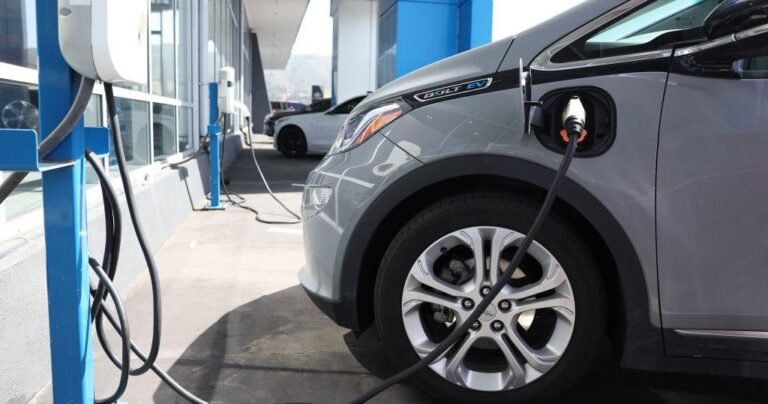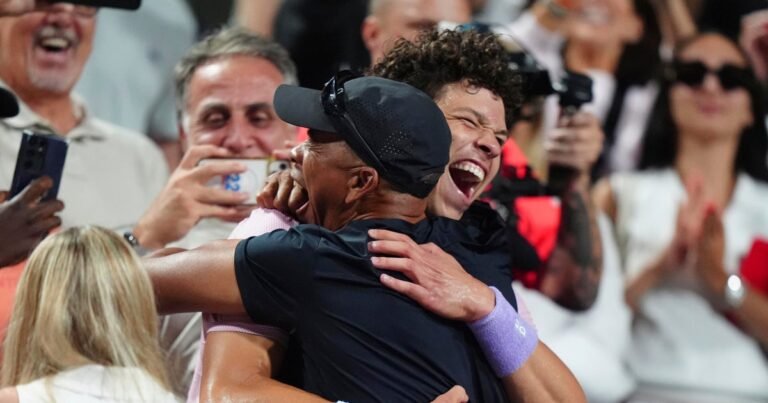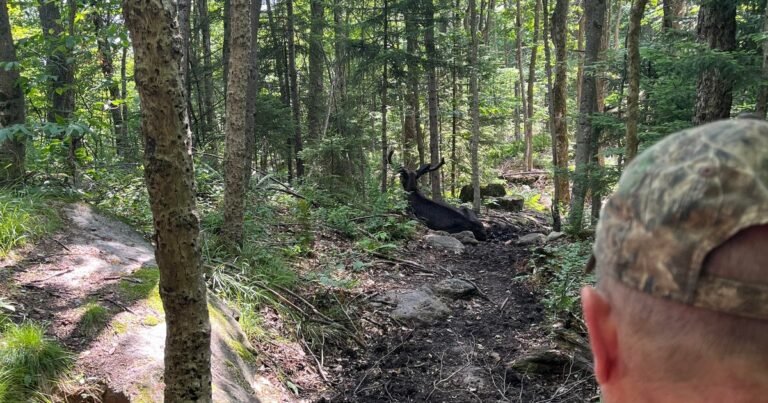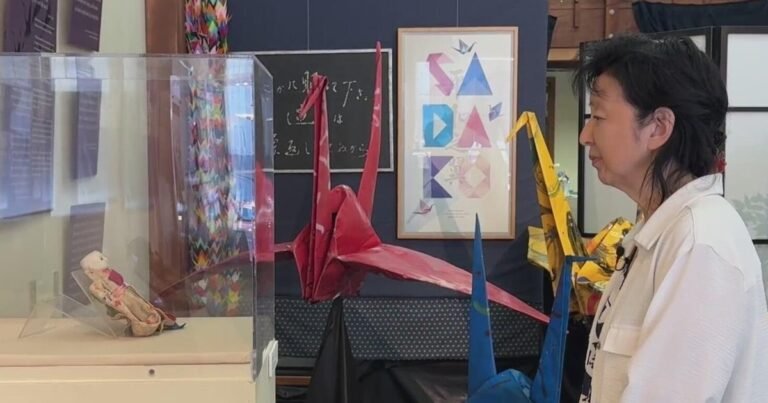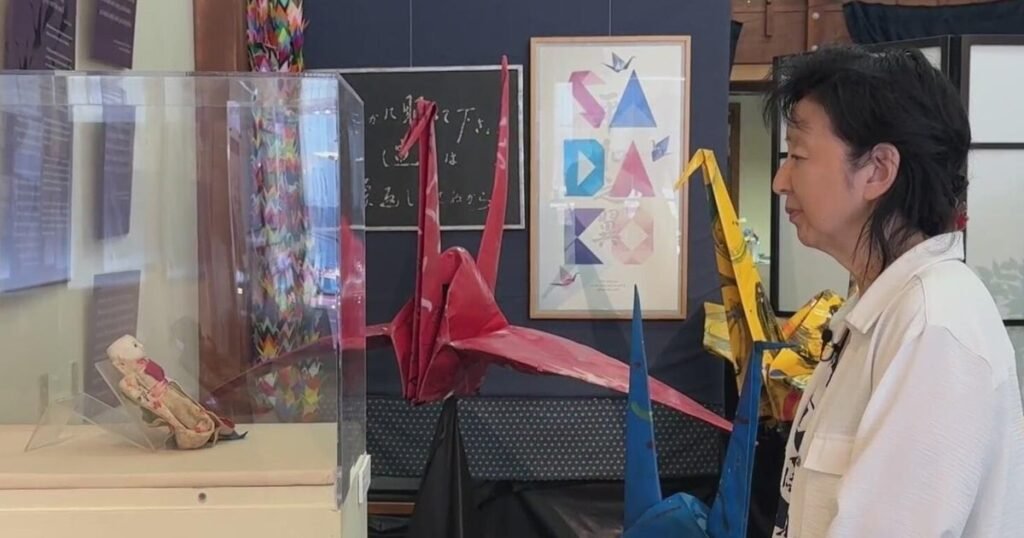
Inside a tiny museum in San Francisco’s Japantown, there is a powerful message about the atrocities of the atomic bomb.
“Americans see the bomb as a beautiful mushroom cloud, and the Japanese who were on the ground see it as ground zero, the devastation, the 70,000 people who lost their lives in an instant,” said Rosalyn Tonai, Director of the National Japanese American Historical Society.
This summer, the NJAHS resurrected an exhibit from 30 years ago to remember the victims of the Hiroshima and Nagasaki atomic bombs that the United States dropped on Japan on Aug. 6 and 9, 1945.
The two bombings ended World War II, with the Japanese surrendering less than a week later, on Aug. 15.
The exhibit also includes a single relic that serves as a haunting reminder, a doll that was recovered from the rubble in Nagasaki.
“An American family brought it in and let us know that they had kept it all these years. It was given to them by a family that survived the atomic blast,” said Tonai.
The survivor stories are what Tonai wants people to experience and understand. The display also features firsthand accounts from those who survived the atomic blasts, including Jack Dairiki, who still lives in San Francisco.
Dairiki was a Japanese American kid visiting family in Hiroshima who became stuck in Japan because of the war. On Aug. 6, 1945, he was outside a factory on the outskirts of the city when the first bomb dropped.
“We saw three aircraft coming above us,” said Dairiki, during a 2015 interview with KPIX. “At that time, the bomb exploded, all the factory windows went out, it flew over my head. I weighed 100 pounds and was floating in the air.”
And now a new documentary titled “Atomic Echoes” by filmmakers Victoria Kelly and Karin Tanabe is shedding even more light on the devastation.
“Few Americans understand what happened under the mushroom cloud, “said Tanabe. “We all see the exact same image, which really covers up the atrocities, and then we stop there in the history books.”
Tanabe’s great-great uncle was part of the rebuilding effort in Hiroshima.
Kelly’s grandfather was an American medic sent to Nagasaki, who witnessed the effects of peak radiation sickness. He suffered from PTSD and died at the age of 42.
The filmmakers interviewed several other American medics who were sent to Japan 45 days after the bombings.
“They were really torn, they were really proud of their service, and all of them said, you know, we were there, and we can’t ever have these bombs happen again because they were the worst thing we’ve ever seen,” said Kelly.
For Tonai, she believes the topic is still relevant today and still important to talk about.
“We are the cusps of a nuclear buildup, and this is really a call for world peace,” she said. “So, we really need to take a pause and take a look at the human cost and consequences of a possible nuclear fallout.
Her hope is that the history that happened even eight decades ago will never repeat itself.
